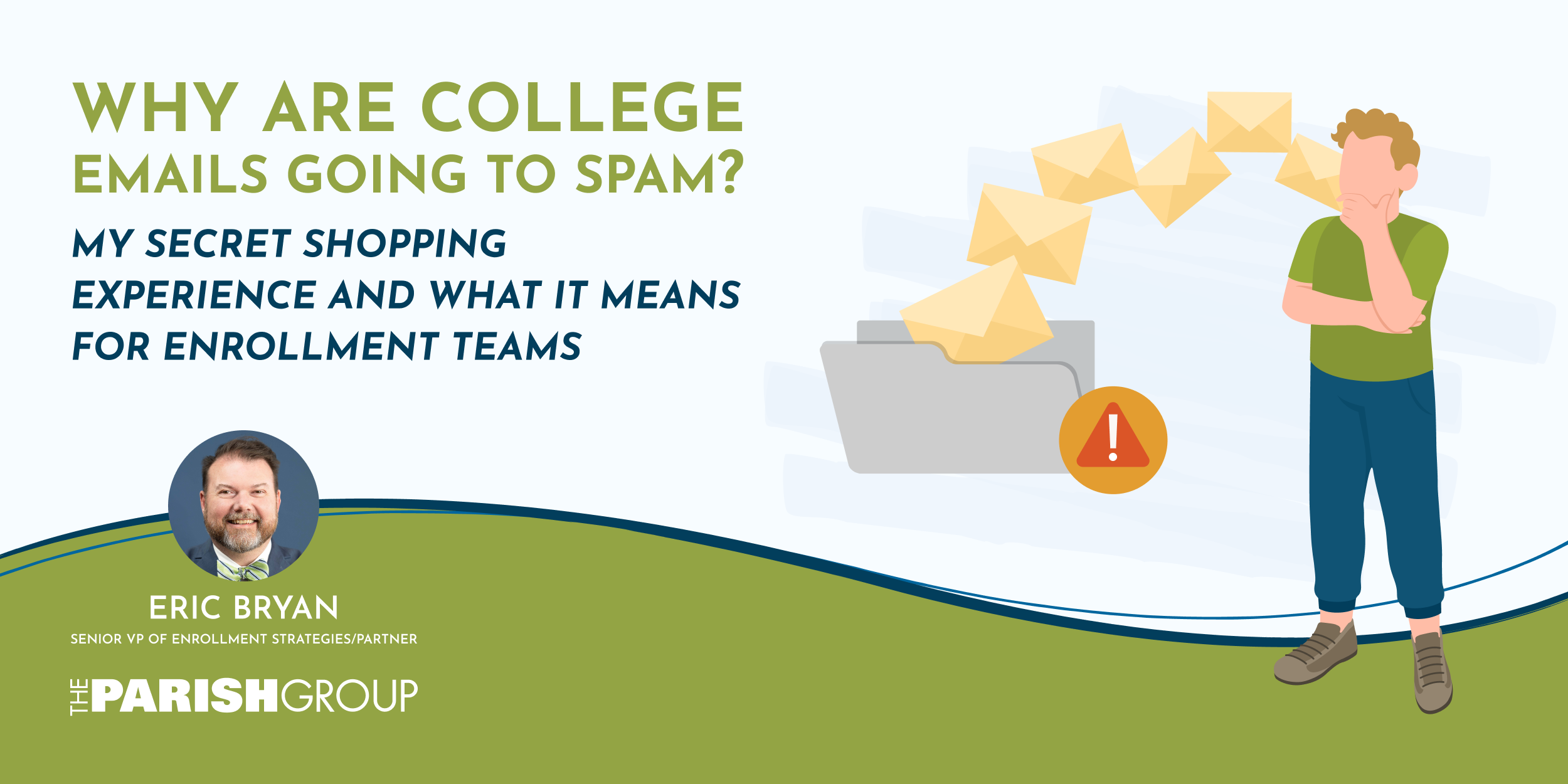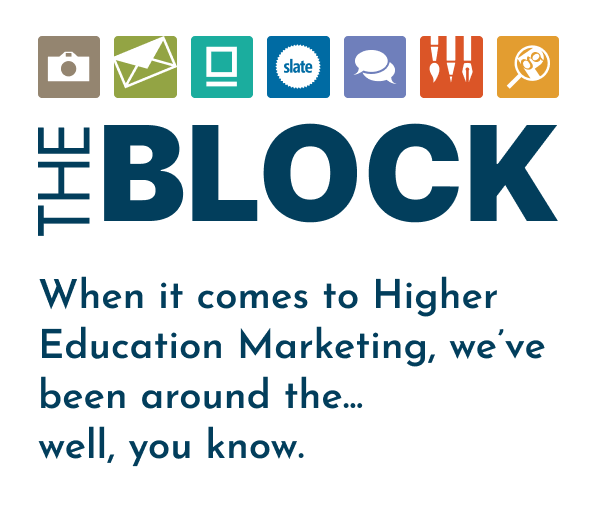
Student search has seen significant changes since the mid 1980s. A college degree was relatively affordable and the options were limitless. Society saw a direct pathway from college to employment, creating a strong perception of value with higher education.
At the time, institutions had the advantage: large numbers of highschool graduates eager to achieve something their families never had the opportunity to do. Name lists were cheap and easily procurable, and standardized tests were the norm.
The mid 1990s and early 2000s exploded with technology and the wholesale adoption of the internet. Websites and emails changed the game for higher ed marketing with new ways to reach prospective students. This momentum hit a steep curb and slowed as a result of 2009’s Great Recession.
The ripple effects of the Great Recession have come to fruition today. Now, we’re saddled with fewer students to recruit, a distrust of higher education’s promise, and many colleges and universities barely staying afloat resulting in tuition-driven institutions closing permanently.
As higher education’s landscape has evolved, so should our strategies. Let’s take a look at ways you can redefine and rejuvenate your student search to fit the current market.
Building the Right Strategy
Data is the key to success for any enrollment office. Now more than ever, institutions need to leverage data to define target markets and profiles of the types of students that will enroll and ultimately graduate.
A successful student search strategy starts with research. As your institution builds its strategy for enrollment, look to employ a predictive model as your strategy’s foundation.
Typically, you’ll need three to five years of enrollment funnel data for insight into markets that will yield the highest level of response (primary), but also potential markets of influence (tertiary). This provides you with the ability to increase your market footprint and ultimately grow your market share.
Using this advanced modeling allows for a more strategic focus for name buys to increase yield throughout the funnel. It’s extremely important to diversify your name buys. Because of recent test-blind policies, testing services have less influence on name purchasing.
Use this as momentum to tap into alternative name sources like college search sites. They do a great deal of upfront work qualifying students interested in your institution or a peer’s. The duplication is less than you might think, but will allow for saturation of identified markets.
Once you get students’ attention, a comprehensive, multi-medium communications strategy is essential. With today’s modern CRMs, you can accomplish timed, personalized, and well-structured email communications.
With data in hand and the right CRM, you then must provide prospects with relative content that speaks to them based on information they’ve shared with you. Think major of interest, funding their education, social opportunities, athletics, or success stories of recent alums—bonus points if you can find someone from their high school or local area!
Ultimately, you want to build communication journeys that show the time you’ve taken to understand their wants, worries, and needs.
Digital Campaigns
Another thing to consider is your digital efforts. Digital campaigns have hit their stride over the last decade as colleges and universities face declining enrollments.
An American Caldwell report from September 2023 reported that some universities spent upwards of $1-2 million per month on digital advertising campaigns. Further, total ad spends for this industry are projected to hit $3 billion in the near future.
While the above numbers seem extreme, more recent available information shows that schools typically spend about $138.7k in digital advertising towards first-time-first-year populations.
In our partnerships, we take a more strategic approach. We avoid bloating digital ad spend unnecessarily if the ROI is not on par. Our partner institutions spend on average $100k on digital advertising towards FTFY students, with click-through rates as high as 25%!
So before you hit launch on your digital ad campaigns, ask yourself the following questions:
- Is the purpose of this campaign brand awareness for your institution overall?
- Are you trying to advertise a new, in-demand program?
- Are you targeting prospects as a part of a campaign? What are those audiences (undergrad, graduate, online, or adult learners?)
Not only the content, but the tactic of deployment and channels should differ for each institution. The upcoming generation are digital natives—they have unique ways of responding to digital ads and therefore require a unique approach.
A blend of communication mediums captures the interest of as many students as possible, finding the right message and modality to strike a chord with the right prospective student.
Focus on Enrollment, Not Just Applications
More applications doesn’t always equal a large enrolled class.
Reviewing markets that provide inquiries and applicants is just the first step. Where does your enrolled class originate? You should be able to determine market viability by the number of students enrolled from a given market.
As we see enrollment decrease in numbers for the markets, these areas may hold promise for future growth. Target those tertiary markets earlier to build brand affinity. Primary and secondary markets should provide you with 80% or more of the enrolled class.
A data-driven yield strategy is vitally important to maintain the class you’ve worked hard to build. Maintain communications throughout spring and summer that are both transactional and informative so you can deliver relevant information to applicants that will solidify their decision to enroll.
Five Things to Consider:
- What are you saying and when? It’s important to review communications sent post-application and their cadences.
- How many applicants in your pool have yet to send transcripts, test scores, or their enrollment deposits?
- Does your counseling staff use direct outreach via phone or text, personal notes, or other printed materials?
- Do you have parent communications?
- Have you assessed the strength of your applicant pool using data analytics?
Got Questions on Student Search?
Student search strategy can be complex. There are a lot of factors to consider, and each institution requires a different approach. It’s okay to not know all the answers or the best strategy—that’s what we’re here for.
If you need more information on communication strategies, about predictive modeling, student search, building out communications plans, optimizing your institution’s CRM, campus photography, or simply need a nudge in your enrollment processes, The Parish Group is at your service.
Our experts are quick phone call or email away. Reach out at success@parishgroup.com or call our office at 828-505-3000.







